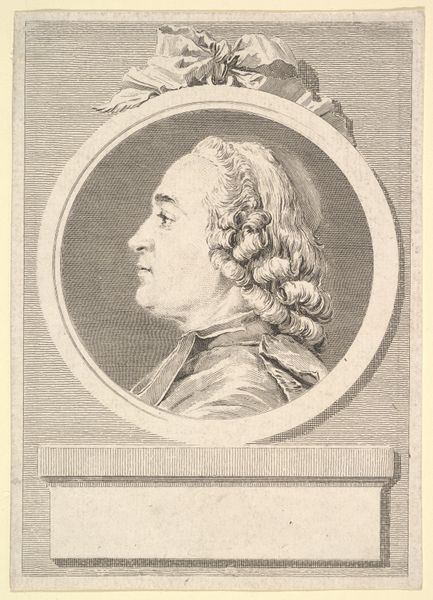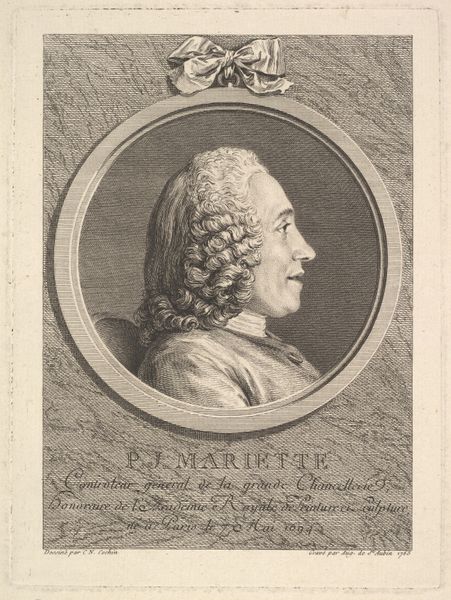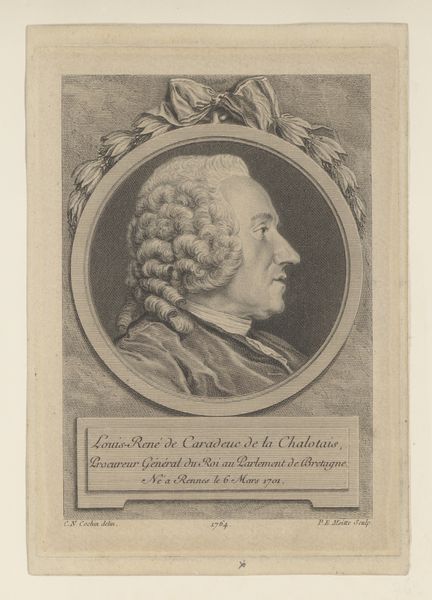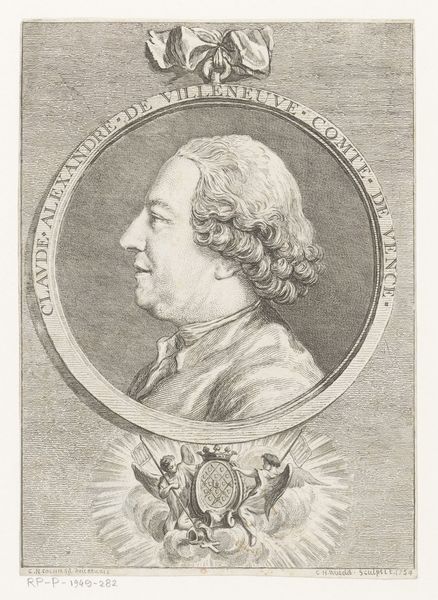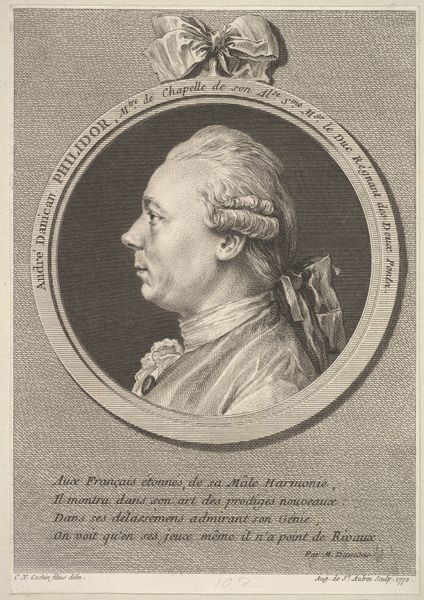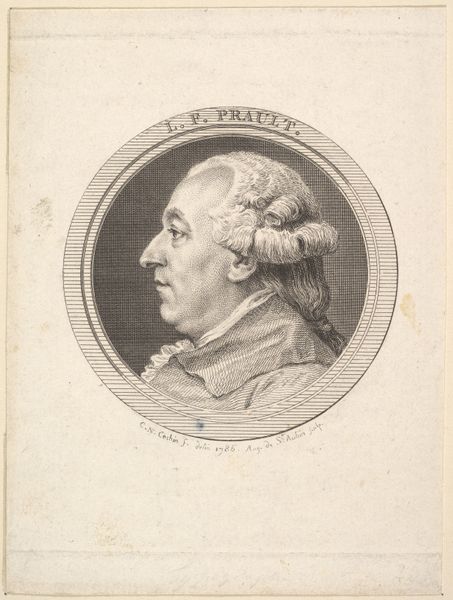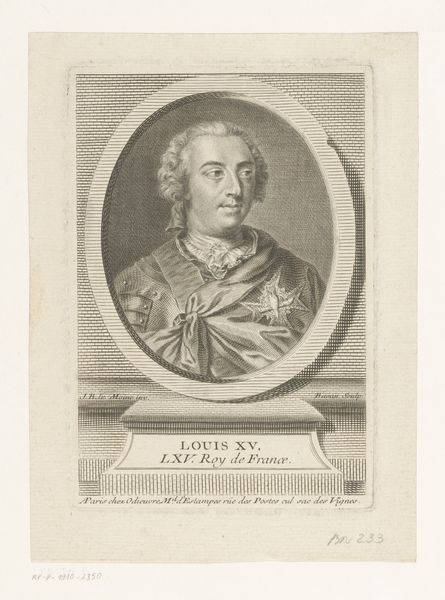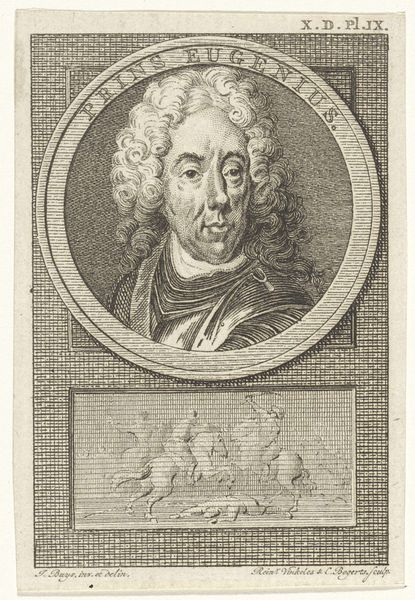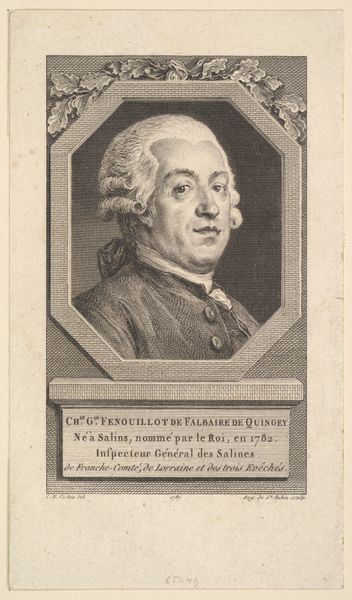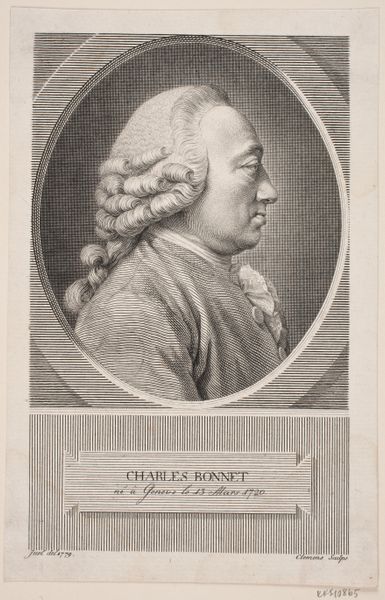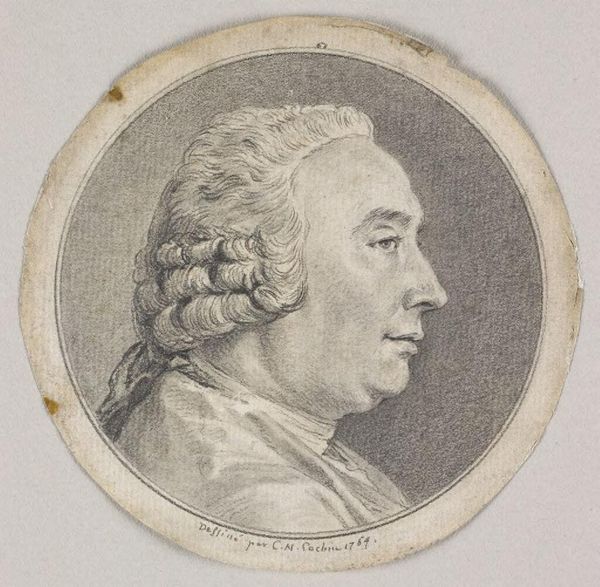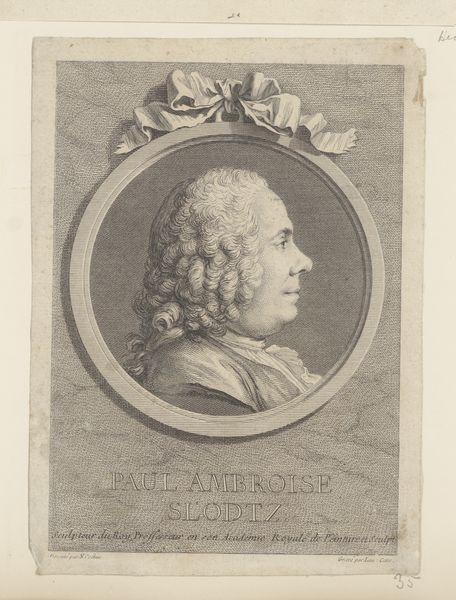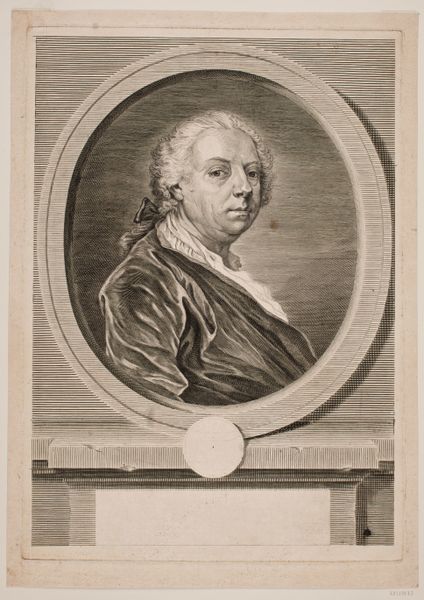
drawing, print, engraving
#
portrait
#
drawing
#
neoclacissism
# print
#
figuration
#
line
#
academic-art
#
engraving
#
rococo
Dimensions: Mount: 10 1/2 × 7 13/16 in. (26.6 × 19.9 cm) Sheet: 7 7/16 × 4 15/16 in. (18.9 × 12.5 cm)
Copyright: Public Domain
Curator: Looking at this engraving, "Portrait of Charles-Antoine Jombert" made in 1770 by Augustin de Saint-Aubin and currently housed at the Met, my immediate thought goes to the extraordinary detail rendered in such a delicate medium. Editor: Absolutely, there's a formality, a stillness almost, emphasized by the crisp lines and limited palette. It's quite representative of the era's aesthetic. What do you notice about the print itself? Curator: I'm fascinated by how the labor of the printmaker interacts with the depiction of Jombert. Here was a man described as “Libraire du Roy” – bookseller to the King - being portrayed via this reproducible method, an object presumably available for purchase and circulation. Was the goal here widespread promotion? Or an acknowledgement of a professional network within French society? Editor: It's undoubtedly a statement on Jombert's status. Consider the rococo details in the hair, for example, contrasting with what seems to be emerging Neoclassical simplicity overall in the piece. Engravings like these served very real social functions within the political structure of France. Curator: I'm drawn to the contrast between the almost mass-produced quality of an engraving versus the implied elite status of both the subject and presumed audience. It's an intersection of material processes, commerce, and social hierarchy. Editor: That intersection is precisely where its historical significance lies. We see in this work an example of art operating within a patronage system and a cultural framework that dictated the representation and consumption of images. Curator: Agreed. It really makes you consider the means by which fame and influence were created and circulated. Editor: And also to think about the very practical, work-a-day lives of people working in the world of books. Curator: Looking closely reminds us of those individuals’ tangible contribution to cultural memory. Editor: Indeed, it grounds the entire artistic output within a tangible historical reality. Thank you!
Comments
No comments
Be the first to comment and join the conversation on the ultimate creative platform.
